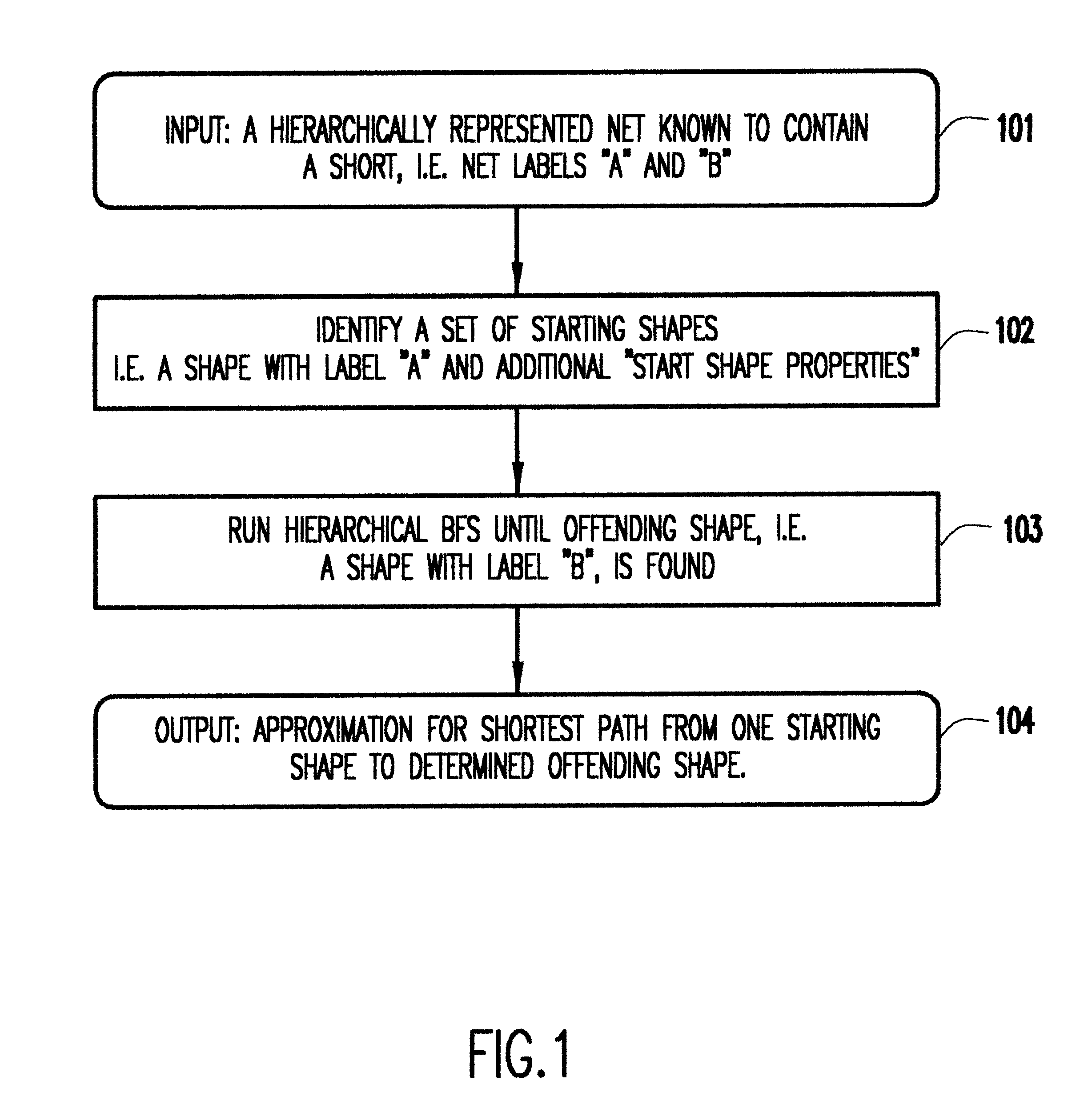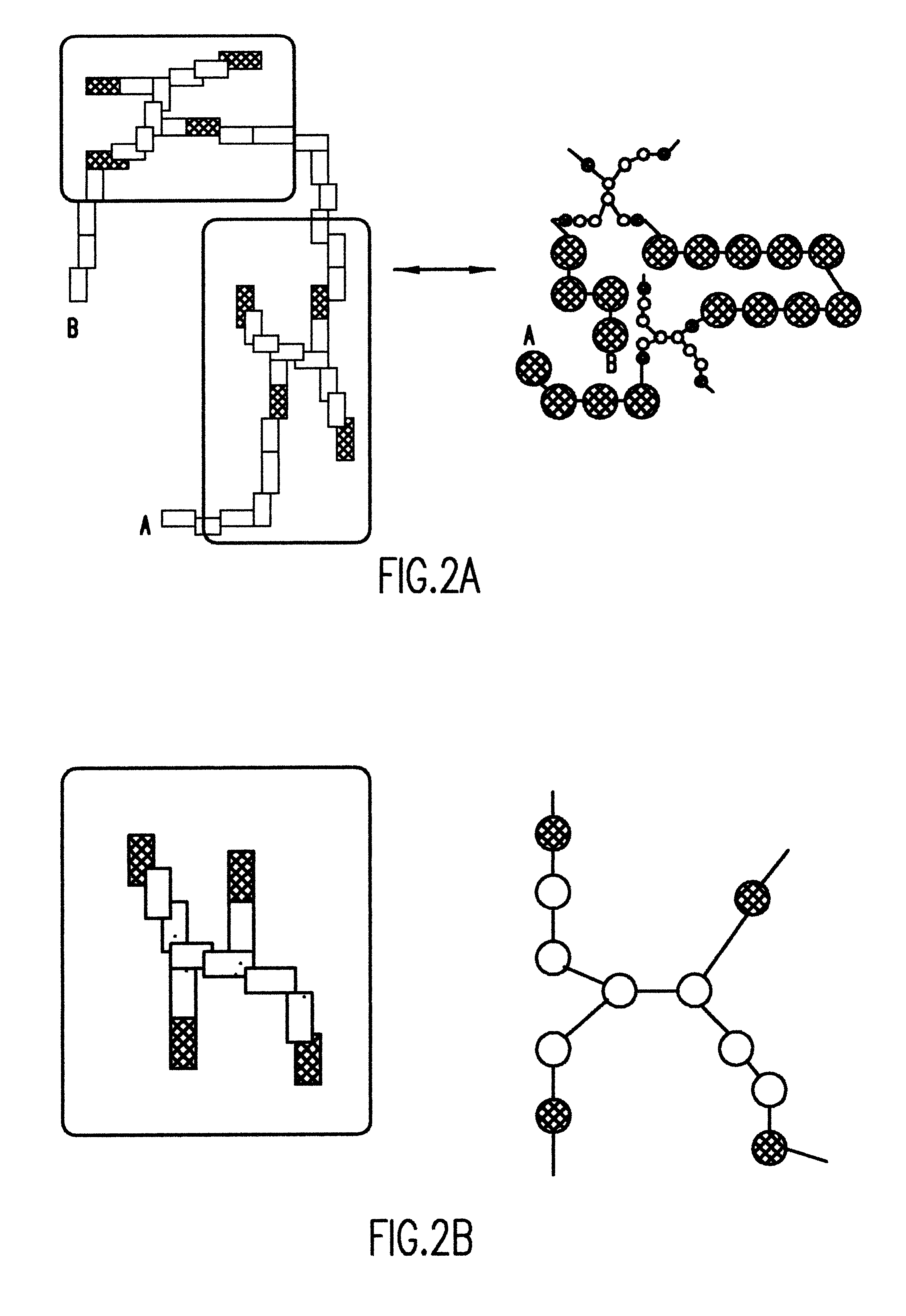Efficient tracing of shorts in very large nets in hierarchical designs using breadth-first search with optimal pruning
a very large net and efficient technology, applied in the direction of cad circuit design, program control, instruments, etc., can solve the problems of inability to process large designs, inability to find etc., to achieve efficient tracing of shorts in very large nets
- Summary
- Abstract
- Description
- Claims
- Application Information
AI Technical Summary
Benefits of technology
Problems solved by technology
Method used
Image
Examples
Embodiment Construction
Referring now to the drawings, and more particularly to FIG. 1, there is shown an overview of the trace short process. The input 101 to the trace short process is a hierarchically represented net which is known to contain a short; i.e., it contains at least two VLSI design components attributed with net names, whose net names are different. We refer to these net names with the place holders "A" and "B" in the following. This net, which consists of a set of leaf instances in conducting layers of the design, is mapped to a graph as described above. For the description of the preferred embodiment, we assume that the VLSI leaf components are geometric shapes.
In function block 102, a set of starting leaf objects is identified. Since the only available information is the set of (hierarchically represented) leaf objects and the net attributes, the leaf objects with different attributes is a minimal set of shapes for which it is guaranteed that it contains the short. The shortest path out o...
PUM
 Login to View More
Login to View More Abstract
Description
Claims
Application Information
 Login to View More
Login to View More - R&D
- Intellectual Property
- Life Sciences
- Materials
- Tech Scout
- Unparalleled Data Quality
- Higher Quality Content
- 60% Fewer Hallucinations
Browse by: Latest US Patents, China's latest patents, Technical Efficacy Thesaurus, Application Domain, Technology Topic, Popular Technical Reports.
© 2025 PatSnap. All rights reserved.Legal|Privacy policy|Modern Slavery Act Transparency Statement|Sitemap|About US| Contact US: help@patsnap.com



